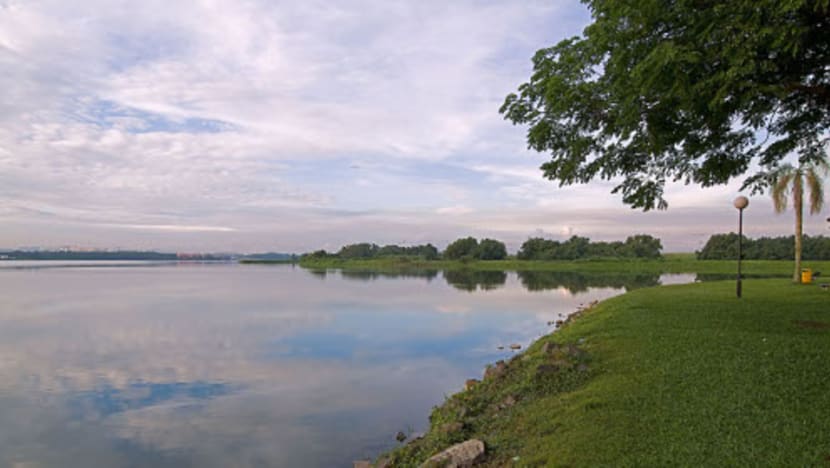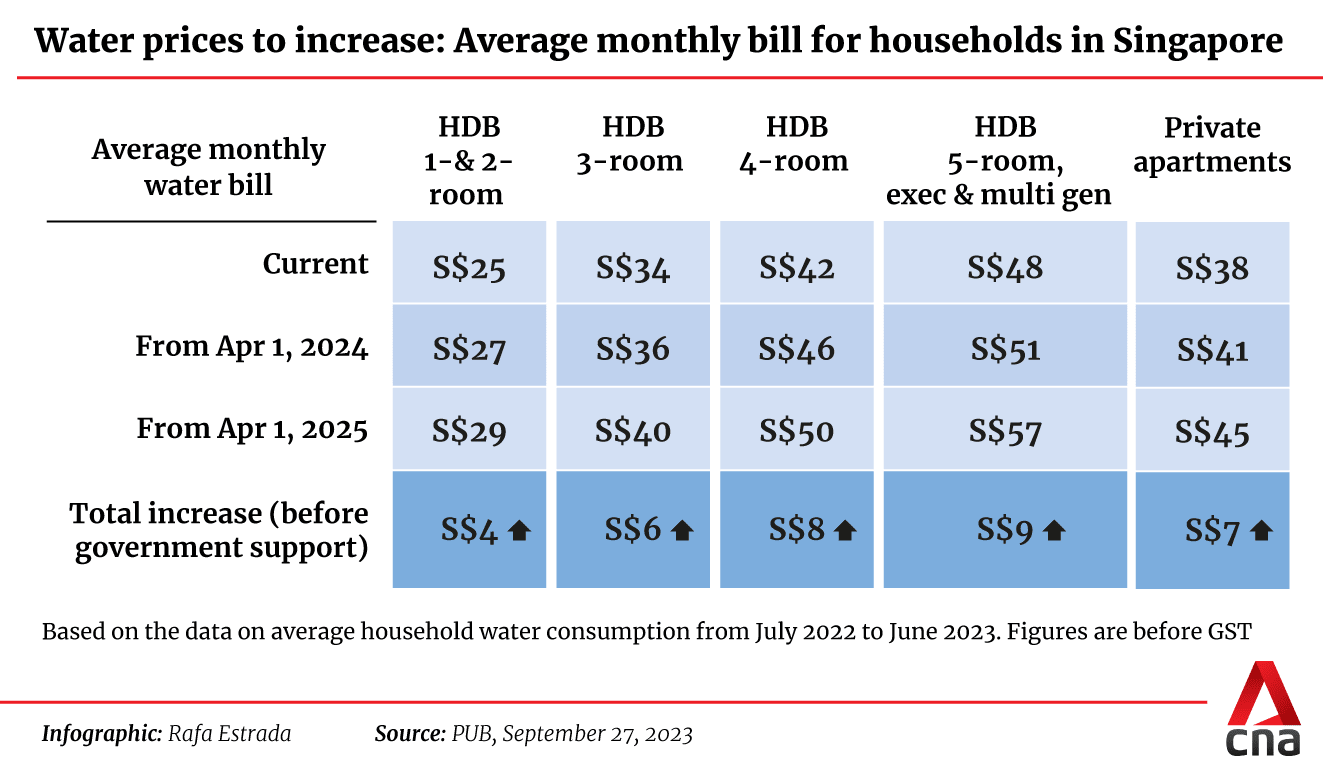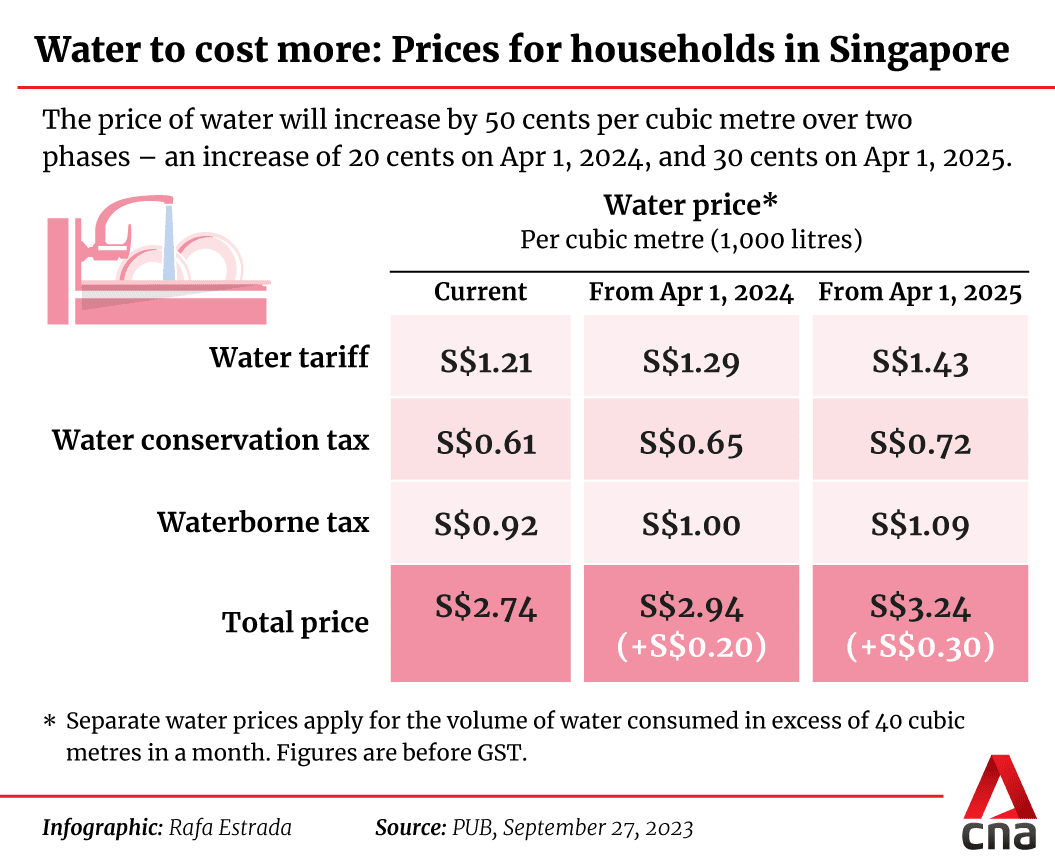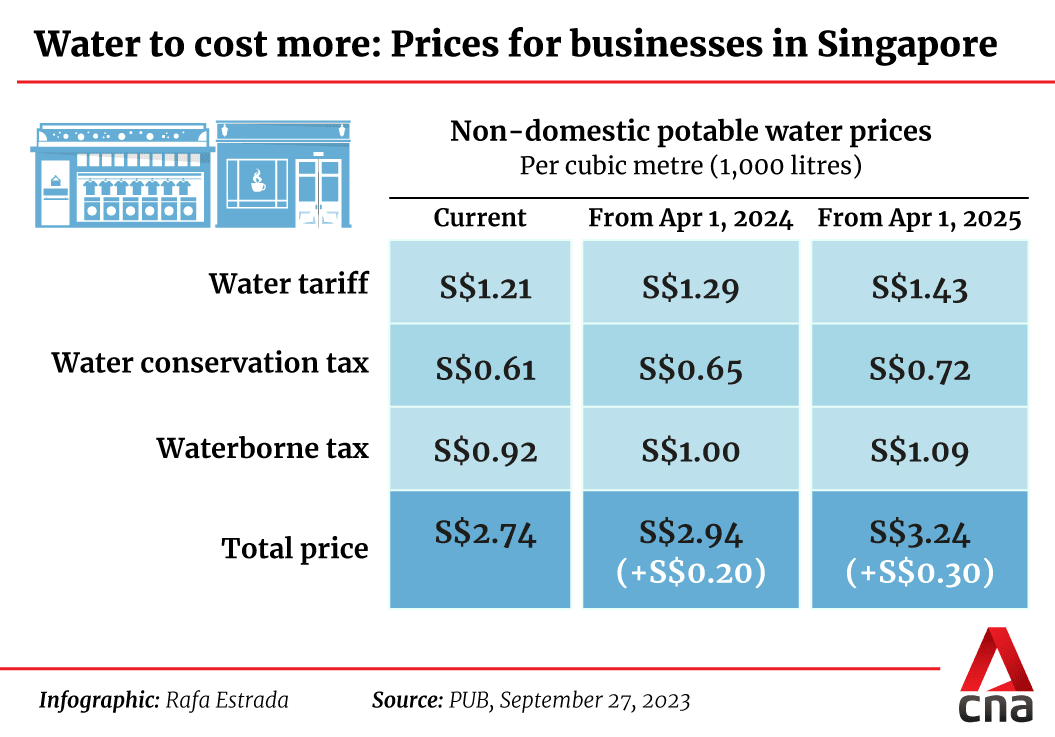What you need to know about Singapore's impending water price hike
How much more will households and businesses pay? What's driving up water prices and why the decision to raise prices now?

SINGAPORE: Water prices are set to increase by 18 per cent, starting from April next year.
How will the impending rise impact you, businesses or hawkers? Here's what you need to know.
1. How much more will I have to pay?
If you consume up to 40 cubic metres of water, you will have to pay an additional 50 cents per cubic metre.
The hike will be implemented over two phases: 20 cents on Apr 1, 2024 and 30 cents on Apr 1, 2025.

Those who consume water above the 40 cubic metre threshold will have to pay an additional 70 cents per cubic metre for the exceeded amount. This increase will also be split over two years: 25 cents on Apr 1, 2024 and 45 cents on Apr 1, 2025.
The average household consumes about 15 cubic metres of water a month.
Most households will see an increase of less than S$10 (US$7.30) in their monthly bill. HDB households and non-HDB households will see an average increase of S$7 and S$8 a month respectively.

2. What help will I get?
The Ministry of Finance will on Thursday announce additional support measures to help households with the impact of the water price increase and other cost of living concerns.
Meanwhile, all one-, two- and three-room households can apply for e-vouchers under the Climate Friendly Households Programme to offset the costs of installing water-efficient shower fittings.
The programme will be extended to more water fittings to support water savings. The programme will help households reduce water and energy consumption, while benefitting from utility savings of around S$50 to S$150 annually.
3. How much more will businesses have to pay?
Three in four businesses, including small and medium enterprises will experience an increase of less than S$25 in their monthly water bills.
Three out of four hawkers will see an increase of less than S$15 per month.
Businesses that use NEWater will see the price of NEWater increase by 17 cents per cubic metre in two phases: 8 cents on Apr 1, 2024 and 9 cents on Apr 1, 2025. Businesses can tap on PUB's recently enhanced Water Efficiency Fund, which provides support for companies in implementing water efficiency projects.

4. When were water prices last raised?
Water prices were last raised by 30 per cent in 2017, also over two phases.
Announced in Budget 2017, the water prices were raised for the first time since 2000 to reflect the costs of water supply and to maintain Singapore's water infrastructure.
5. Why are prices going up this time?
The latest price increase is due to rising operating costs and heavier investment in water infrastructure.
The cost of producing and supplying water has gone up substantially since the last price revision, PUB said.
Average electricity market tariffs have increased by about 37 per cent; construction costs have risen by 35 per cent; expenses for essential chemicals in water treatment have grown by 33 per cent; and maintenance expenses have also gone up by 18 per cent due to higher manpower costs.
With demand for water expected to nearly double by 2065 in tandem with economic and population growth, and climate change putting a strain on local catchment and imported water, PUB will also need to maintain long-term investments in water infrastructure to ensure the security and sustainability of the water supply.
This involves further developing NEWater and desalinated water, which are more energy-intensive and more expensive to produce, but are more weather-resilient.
The agency has invested more than S$3 billion in the past five years in water infrastructure. For example, it has added three desalination plants in Tuas, Marina East and Jurong Island since 2017, and is continuing to upgrade ageing local water treatment plants.

















